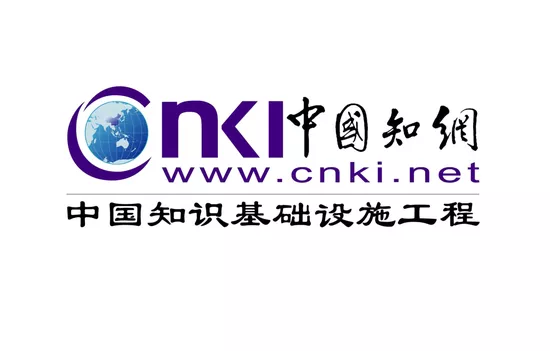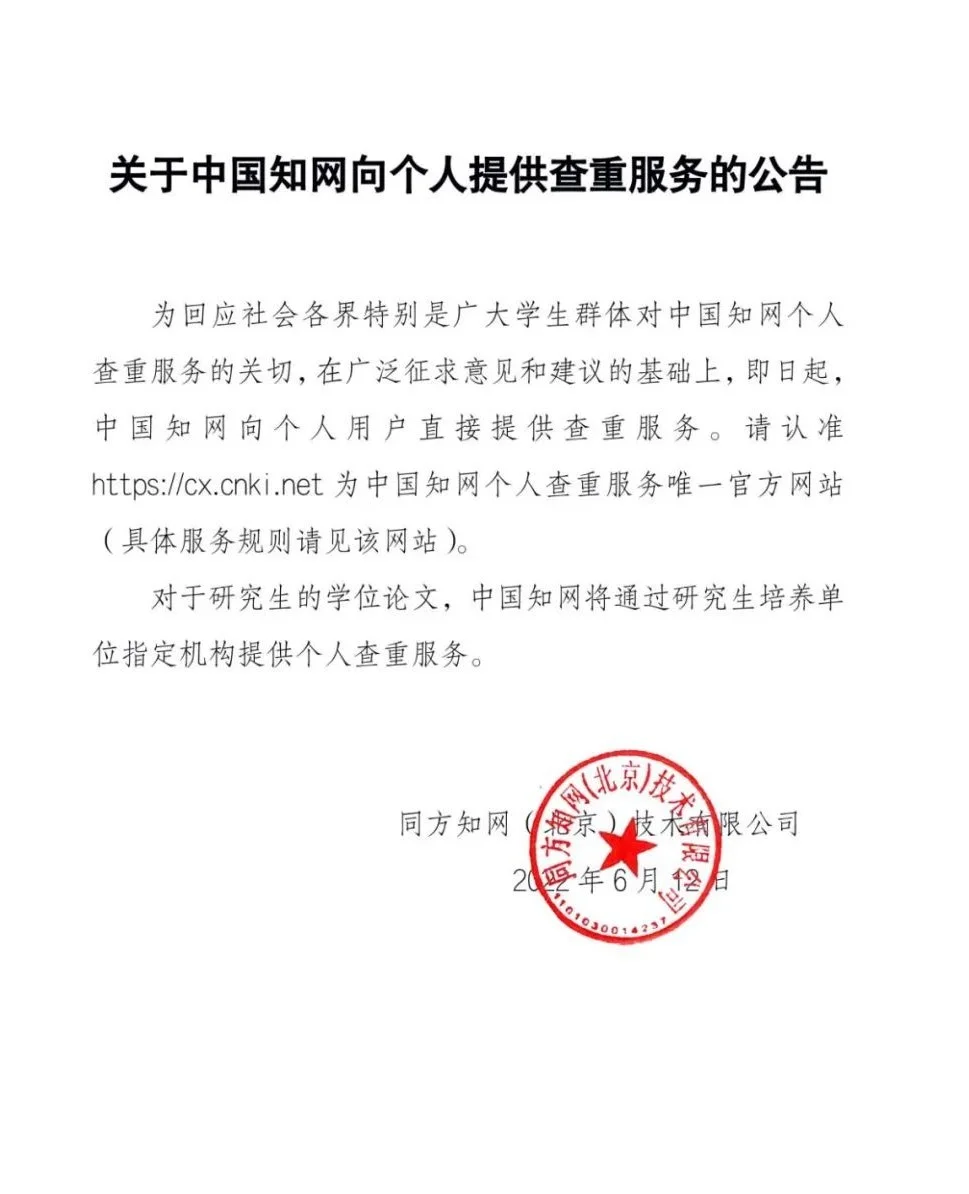In the early morning of June 12, HowNet announced that duplicate checking was open to individuals. This is the first time that HowNet has opened duplicate checking service to individual users other than institutional users. Previously, the State Administration of Market Supervision announced an investigation into the suspected monopolistic behavior of HowNet. HowNet expressed its firm support and full cooperation. The opening of individual duplicate checking has released the positive signal of HowNet's anti-monopoly, and the price seems to be "people-friendly", 1.5 yuan / 1000 words.

What does HowNet monopolize? Previously, it was only open to institutional users. Many students who did not want to affect the graduation process due to duplication inspection in the final stage would patronize other market-oriented platforms during the writing process of their papers to timely master the repetition rate of their papers. As colleges and universities still take HowNet as the authoritative channel for duplicate checking, most of the Hawking advertisements on these platforms are that the duplicate checking rate is close to HowNet. The higher the closeness, the higher the price. For a master's thesis of more than 30000 words, there are often hundreds of yuan for duplicate checking. This announcement of HowNet is conducive to correcting the phenomenon of arbitrary charges in the market. However, this is just the tip of the iceberg. What HowNet really monopolizes is the huge amount of academic resources.

At present, HowNet is "large and comprehensive" which is difficult for other academic search platforms to reach. The data shows that the gross profit margin of HowNet has risen rapidly in the past decade, exceeding 50%, easily crushing nearly 90% of A-share listed companies. Relying on years of intensive electronic academic publishing, HowNet has created a huge monopoly network. The rapid accumulation of capital and profits is not only due to the rapid development of emerging markets, but also due to the business model of "one capital, ten thousand profits" of electronic academic publishing.
As a producer of knowledge, scientific researchers pay more attention to the dissemination effect of works and achievements. In addition, in the early years, the awareness of intellectual property and copyright in China's academic circles was relatively weak. Many authors did not sign copyright transfer agreements with journals when publishing academic works. In the era of digital transformation, electronic chemistry periodicals have natural circulation advantages over paper printed materials, and are the best way to publicize, spread and expand influence. In order to be widely disseminated at the first time, academic journals often regard the cooperation with HowNet as a mutually beneficial relationship. Journals focus on circulation and platforms focus on resource aggregation. Therefore, many journals have not signed strict benefit sharing restrictions with platforms. This is also an important reason for the extremely low cost of HowNet resources in the original accumulation period.
With more than 200million Chinese documents and more than 10000 periodicals, HowNet has reaped the cooperative relations of more than 30000 universities and research institutions, as well as the huge flow of annual full-text downloads of more than 2.3 billion articles. With such a large coverage, HowNet has full confidence in raising prices. A series of universities and academic institutions have experienced substantial price increases and poor negotiations. Under the cover of this big network, individual and institutional users are in a dilemma. Cooperation means accepting high prices, and non cooperation means losing the main channel for the flow and dissemination of works.
HowNet is a large closed island, but it does not mean that if there are more islands, the closed situation will change naturally. The academic publishing industry has been around the world for nearly a century, and open access to academic resources is still only partially realized, and is facing controversy. HowNet takes the "China knowledge infrastructure project" as its positioning, but this positioning is not a public welfare project after all. The market-oriented operation is bound to avoid the design of the business model.
Who pays becomes the key. The business model of HowNet is the traditional user payment thinking. User payment becomes knowledge payment, and the platform pays for knowledge. The main payers are mostly the knowledge producers themselves. This is a classic phenomenon in academic publishing industry. The free platform for scientific researchers provides knowledge to produce more knowledge, but they need to spend money to download their own and peer papers. The mode of paying users to buy has greatly affected the dissemination and sharing of academic resources.
The voice of advocating knowledge openness believes that academic resources should be open to the public free of charge. In recent years, various types of open access (OA) have been tried by many publishers around the world. For example, since 2005, Springer nature, a world-famous academic publishing institution, has published 1million papers that are free to all once published. However, no matter how open and in what form, these models need to solve the problem of "who is responsible for the wool", and determine the cost sharing mode and profit source channel to maintain the operation of the business model.
For example, the gold OA model is highly open. Publishers share papers on the Internet free of charge, and do not charge readers. However, authors, scientific research or other support institutions are required to pay paper processing fees. A higher-level diamond OA model, in which the publisher bears all the costs and charges neither readers nor authors, is usually used by university publishing institutions with stable budget sources.
With the exploration and current situation of the global academic publishing industry, there are many ways to change the monopoly situation of HowNet. For example, in the short term, we can promote HowNet to return to a reasonable price range through administrative regulation. In the medium and long term, we encourage the cultivation of other platforms to accelerate development and promote the diversification of market structure, but this will take time. After all, HowNet has accumulated resources that other institutions may not be able to reach in the short term. In addition, from the perspective of user convenience, some people worry that if the HowNet is split, the search platform will be fragmented, and the "one-stop" query may no longer exist. Instead, multiple search may bring new troubles to users.
From monopoly to orderly competition based on user payment mode, and then to free and open access, it is not a simple three-level jump. Although some international publishing organizations have begun to try to open up their resources, they are still exploring the ideal model. Gold open access (gold OA), the author has the right to choose whether to open or not according to the willingness to pay, and there are still a large number of documents in the state of user payment. Diamond OA has specific requirements on the financial resources and profit orientation of publishing institutions. There are various databases of English literature. There are multiple searches by individual users and repeated purchases by institutional users. How to find the golden section between resource integration and freedom and openness? More systematic and institutional thinking is needed.
(the author Zhangnan Diyang is a researcher of the national development and Strategy Research Institute of Renmin University of China and an associate professor of the school of Public Management)